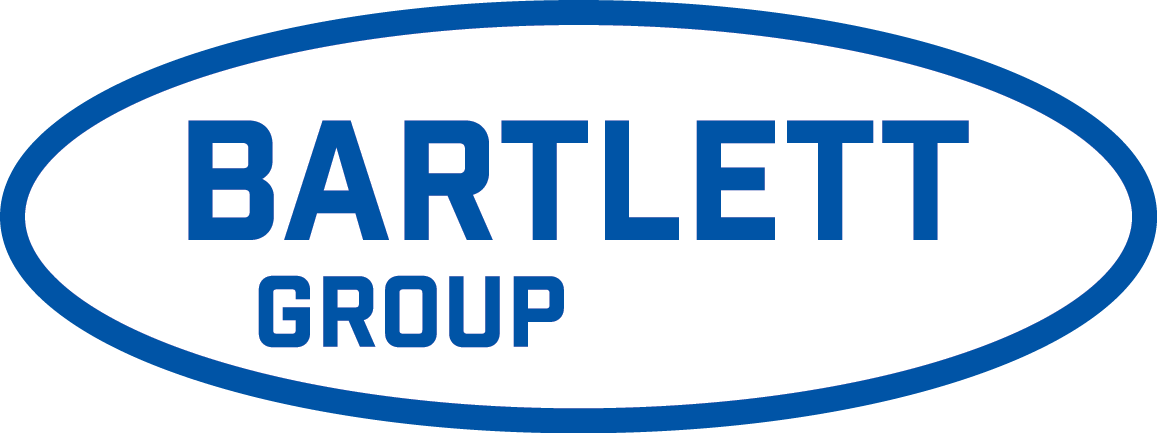GSCS, Bartlett Group’s Union division, has been at the huge Shell Pennsylvania Chemicals construction site outside of Pittsburgh for the last four years.
GSCS had a hand in the scaffold erection, insulation and fireproofing at Shell’s complex, where Bechtel Energy is serving as the EPC. GSCS is a full-service union shop, providing scaffold, paint, insulation and abatement services, as well as specialty turnaround mechanical services to petrochemical, power, and oil and gas industries.
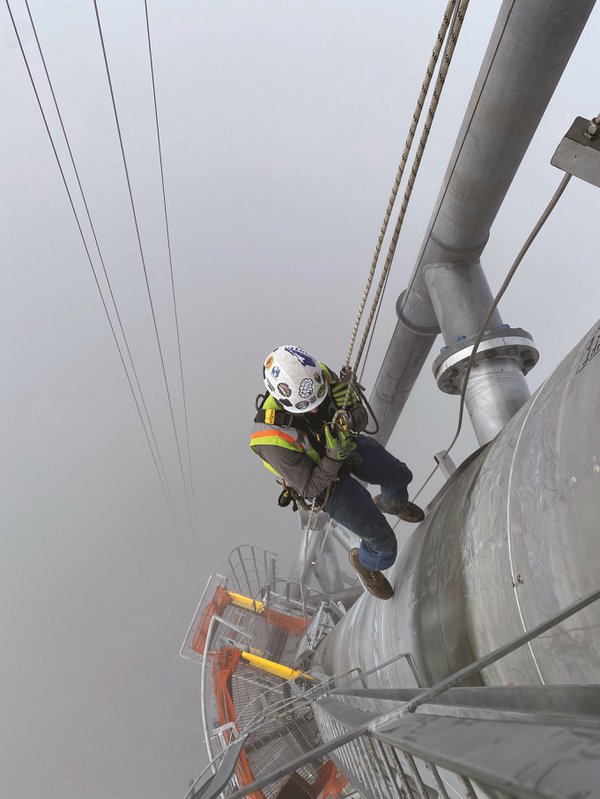
Its specialty rope-access division has also been on-site for 18 months, performing the most unprecedented work in its history. Rope access has been taken to highest levels of union craftsmanship.
GSCS rope access provides the customer with skilled union craftsmen. These tradesmen can access the most out of reach areas and perform skilled work in their fields of expertise, in a fraction of the time it would take to rebuild scaffold. Rope access is the only feasible means to do the work at this phase of the project.
Historically, rope-access groups have been non-union. Their presence in the Northeast part of the country has been unknown on union construction sites up until this project. Normally, rope access has been limited to testing, inspections or non-craft specific work. Rope access has been taken to a new level of craftsmanship at the Shell Pennsylvania Chemicals site.
The 780-acre (including buffer space) petrochemical complex is a huge job site. All the craft on site are union – over 9,500 at peak construction. It was a different dynamic to set up a rope-access crew to do craft work at the Shell complex. Rope access training has not been offered as one of the certifications by any of the local union trades in the past.
GSCS worked with the local trades and agreed to send union craft to get rope access training. The rope-access company had to find interested union tradesmen, and then send them to the rope-access training facility in Louisiana so they could achieve Level 1 status on the ropes. GSCS sent pipe fitters/welders, electricians, iron workers, painters, carpenters and insulators to get certified. Qualifications for the specialty rope team consisted of being fit, good at their trade and not afraid of heights.
The uniqueness of this rope access group is that it combines two distinct skill sets. First, the skilled union craftsmen. Second, the Level 3 rope experts. Level 3s have expertise in rope rigging and training in every different type of safety rescue scenario. A Level 3 is required on a crew to oversee all rope access, rigging, safety and to perform any rescues if needed for the crew.
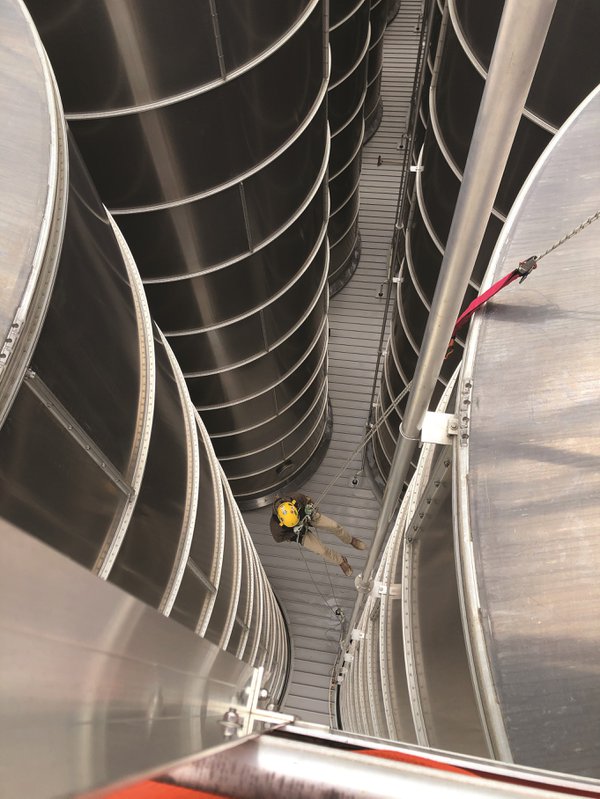
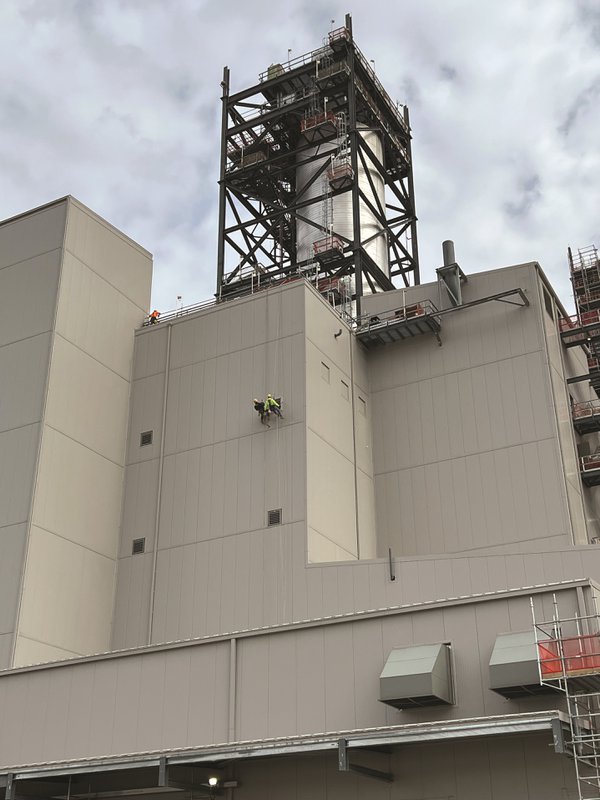
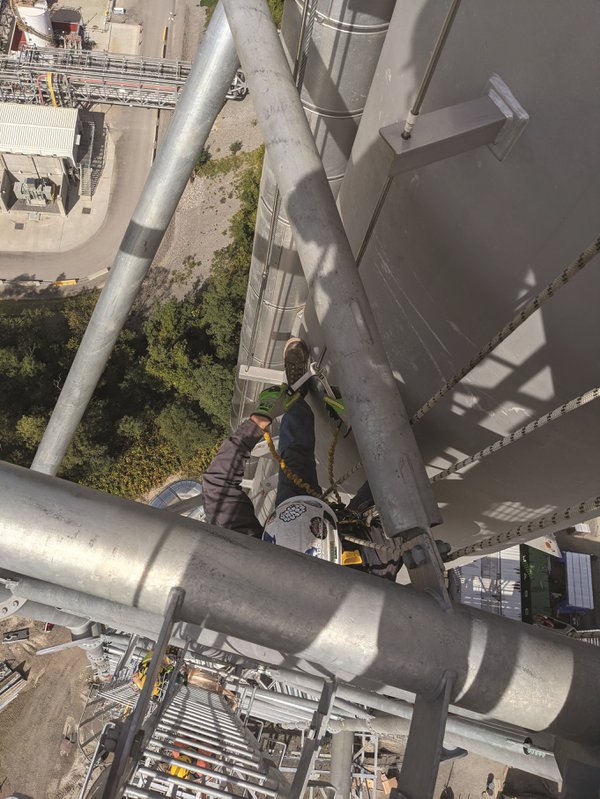
Rope access is covered by a specific set of governing rules. Safety is the driving factor. There are different levels of rope access technicians: Level 1, 2 and 3, with Level 3 being the highest. It takes 500 documented hours of rope time plus another week’s worth of training for a Level 1 to become a Level 2.
To attain Level 3 status takes an additional 500 hours plus the Level 3 certification training. The required testing for a Level 3 is intense. Each level consists of different abilities, but the Level 3 is the expert. The Level 3 experts only oversee the rigging of the ropes and the safety of the craft personnel on the ropes.
The Level 3s were provided to GSCS from a subcontracted company, Barracuda Specialty Service. The two companies work hand-in-hand to safely perform construction activities off ropes.
The rope-access team was in need of Level 3 coverage; it had Level 1s construction workers, but a Level 1 is a novice on the ropes. A Level 1 is not allowed to rig his/her own ropes. A Level 3 is required to rig the ropes and stay with the Level 1s at all times. A GSCS rope crew consists of two Level 1 craft and one Level 3 rope expert.
When GSCS rope-access first started doing work at Pennsylvania Chemical, there was some uncertainty as to what the rope craft could actually do from the ropes. As the team accomplished difficult task after task, its notoriety grew and the calls for its services went through the roof. It was more cost-effective to call the rope-access group to do the eight hours of work, instead of putting in 400 man hours to build a scaffold.
The petrochemical plant, which consists of an ethylene cracker, three polyethylene units and a cogeneration plant, is nearing completion and is in the commissioning phase. This means that chemicals and gases are being introduced to the job site, so the dynamics of the site have changed. It also means that much of the scaffolding has been removed from the complex.
As construction nears completion, the facility is double and triple-checked by engineers prior to start up. Items are identified that need finishing touches or adjustments. Perhaps a weld needs painting, wires in a cable tray need securing or a pipe may need the insulation addressed. Sometimes these items are not identified until after the scaffold that was used for the bulk of construction is removed. During the main construction phases, there was roughly 17,000 tons of scaffold standing. As the scaffolds are dismantled to allow for inspections and start up, the GSCS rope crews are busier than ever.
